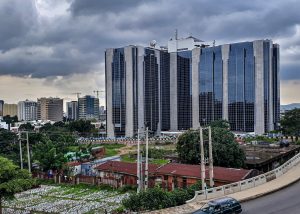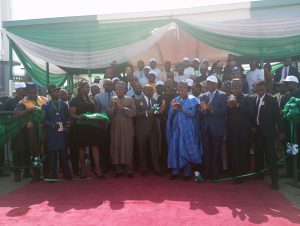Human Violence: Pervasive, Multi-dimensional and Extinction-threatening

Violence is pervasive throughout human society and it has a vast range of manifestations. Moreover, some of these manifestations – particularly the threat of nuclear war (which might start regionally), the climate catastrophe and the ongoing ecological devastation, as well as geoengineering and the deployment of 5G – threaten imminent human extinction if not contained. Separately from these extinction-threatening manifestations, however, violence occurs in a huge range of other contexts denying many people the freedom, human rights and opportunities necessary for a meaningful life. Moreover, human violence is now driving 200 species of life on Earth to extinction daily with another 1,000,000 species under threat.For just a sample of the evidence in relation to the threats noted above see, for example, ‘Rapidly expanding nuclear arsenals in Pakistan and India portend regional and global catastrophe’, ‘Plan A’, ‘City on Fire’, ‘Human Extinction by 2026? A Last Ditch Strategy to Fight for Human Survival’, Geoengineering Watch, ‘International Appeal: Stop 5G on Earth and in Space’ and ‘5G and the Wireless Revolution: When Progress Becomes a Death Sentence’.Given the expanding range of threats to human survival that require a strategic response if they are to be contained, is that possible?Well, any candid assessment of the relevant scientific literature coupled with an understanding of the psychological, sociological, political, economic and military factors driving the violence, clearly indicates that the answer is ‘highly unlikely’. Particularly because so many people are so (unconsciously) terrified and incapable of responding powerfully.However, this does not mean that many people are not trying and some of these people perceive the interrelated and synergistic nature of these threats and know that we must be addressing each of them strategically if humanity and an enormous number of other species are to have any meaningful chance of survival in a viable biosphere. These people range from ‘ordinary’ activists, who work passionately to end violence in one context or another, to globally prominent individuals doing the same. Let me tell you about some of them.Ramesh Agrawal is a prominent social and environmental activist in India who has devoted many years to educating and organizing local village people, including adivasi communities, to defend their homes and lands from those corporations and governments that would deprive them of their rights, livelihoods, health and a clean environment for the sake of mining the abundant coal in the state of Chhattisgarh. However, because his ongoing efforts to access and share key information and his organization of Gandhian-inspired grassroots satyagrahas (nonviolent campaigns) have been so effective, he has also paid a high price for his activism, having been attacked on many occasions. In 2011, for example, he was arrested despite ill-health at the time and chained to a hospital bed. A year later he was shot in the leg, which required multiple operations. He still has difficulty walking with six metal rods inserted through his thigh.The Jan Chetna (‘peoples’ awareness’) movement started by Ramesh has spread to several parts of Chhattisgarh as well as other states of India. For the latest account of his efforts including the recent ‘coal satyagrapha’ focused on coal blocks owned by state power companies but being developed and operated by Adani Enterprises, see ‘Thousands Hold “Coal Satyagraha”, Allege Manufacturing of Consent at Public Hearing’. For his nonviolent activism, Ramesh was awarded the Goldman Environmental Prize in 2014. See ‘Ramesh Agrawal: 2014 Goldman Prize Recipient Asia’ and ‘Chhattisgarh activist, Ramesh Agrawal, bags Goldman prize’.In Ghana, the Women’s International League for Peace and Freedom (WILPF) continues its work under the leadership of President Dr. Ayo Ayoola-Amale, a certified mediator and peacebuilder. One recent activity was a two weeks training course on negotiation and mediation as a tool for conflict resolution for women in the Upper West region of Ghana, particularly three districts: Lawra, Nadowli and Lambussie. The training was aimed at providing local NGOs, community elders, administrators and others with the skills and knowledge to further improve their capacity in the work they do. In such courses, Ayo emphasizes the importance of trust, identity and relationship building issues, quoting Dr. Martin Luther King Jr.: ‘Life and history give eloquent testimony to the fact that conflicts are never resolved without trustful give and take on both sides.’But Ayo has also conducted other courses, such as a three day workshop on peacemaking and mediation skills for the teachers and students at Okyereko Methodist Junior High School which taught skills such as communication (listening, speaking, silence), cooperation, trusting, empathy, responsibility, reconciliation and problem solving. Ayo also used her storytelling skills to convey an understanding of what it means to be a responsible person and how that puts us in charge of our lives. Through the storytelling she reveals some of the personal benefits that come from being honest, reliable, trustworthy and principled and how treating people with respect helps us get along with each other, avoid and resolve conflicts, and create a positive social climate. She told workshop participants that every choice they make helps define the kind of person they are choosing to be and their character is defined by what they do, not what they say or believe.Professor René Wadlow, President of the Association of World Citizens headquartered in France, has been involved for decades in efforts to engage people in world events rather than leave these events to be mismanaged by elites with a vested interest in a particular outcome. In this article, for example, he reflects thoughtfully on the ‘Iran Crisis: Dangers and Opportunities’ by drawing attention to opportunities for citizen engagement through NGOs to influence how the conflict plays out. As he notes: ‘The dangers are real. We must make the most of the opportunities.’ René also continues to examine issues and throw light on subjects well outside the spotlight of the corporate media, such as conflicts in Africa. See, for example, his article ‘Sahel Instability Spreads’.Since 2017 Dr Marthie Momberg in South Africa has been working with international colleagues to address Zionism amongst Christians. Along with a colleague from Kairos USA, Marthie offered, for example, a seminar entitled ‘Christianity and the Shifting of Perceptions on Zionism’ at Stellenbosch University’s Beyers Naudé Centre. ‘With some other colleagues we are also in the midst of a research project at this Centre to understand how to sensitise Christians on the nature of Zionism and how it serves as an important lens on so many other struggles in our world. I am also in the process of writing a number of scholarly articles on ethics and religion in the context of Israel and the Palestinian struggle.’And while on Palestine, US activist journalist Abby Martin recently completed her debut feature film Gaza Fights for Freedom. Directed, written and narrated by Abby, the film had its origins while Abby was reporting in Palestine, where she was denied entry into Gaza by the Israeli government on the accusation she was a ‘propagandist’. Connecting with a team of journalists in Gaza to produce the film through the blockaded border, this collaboration shows you Gaza’s protest movement ‘like you’ve never seen it before’. Filmed during the height of the Great March Of Return protests, it features riveting footage of demonstrations ‘where 200 unarmed civilians have been killed by Israeli snipers since March 30, 2018’ and is a thorough indictment of the Israeli military for war crimes, and a stunning cinematic portrayal of the heroic resistance by Palestinians. You can watch a preview of the film here: Gaza Fights for Freedom (preview). And if you would like to buy or rent the film (and support Abby’s work) you can do so here: Gaza Fights for Freedom.In Guatemala, Daniel Dalai continues his visionary work providing opportunities for girls to develop their leadership capacities at Earthgardens. If you haven’t previously been aware of their work, including in Bolivia and Nicaragua, you will find it fascinating to read how girls – including Carmen, Angelica, Reyna, Katiela, Yapanepet, Zenobia, Deysi, Rosalba, Charro, Katarina and Marleni – in this community each changed their society, often by forming ‘Eco-Teams’, with a remarkable variety of initiatives.The Asia Institute ‘is the first truly pan-Asian think tank. A research institution that addresses global issues with a focus on Asia, The Asia Institute is committed to presenting a balanced perspective that takes into account the concerns of the entire region. The Asia Institute provides an objective space wherein a significant discussion on current trends in technology, international relations, the economy and the environment can be carried out.’ Focused on research, analysis and dialogue, and headed by president Emanuel Yi Pastreich, the Institute was originally founded in 2007 while Emanuel was working in Daejeon, Republic of (South) Korea. Emanuel writes extensively on culture, technology, the environment and international relations with a focus on Northeast Asia. He also serves as president of the Earth Management Institute, a global think tank dedicated to developing original approaches to global governance in this dangerous age. But for more on The Asia Institute, see the website above.While the individuals and organizations mentioned above are just a sample of those directly involved, they are part of an expanding worldwide network in 105 countries committed to working to end human violence in all of its manifestations. Whatever the odds against it, they refuse to accept that violence cannot be ended, and each has chosen to focus on working to end one or more manifestations of violence, according to their particular circumstances and interests. If you would like to join these people, you are welcome to sign the online pledge of ‘The People’s Charter to Create a Nonviolent World’.If your own interest is campaigning on a peace, climate, environment or social justice issue, consider doing it strategically. See Nonviolent Campaign Strategy.If your focus is a defense or liberation struggle being undertaken by a national group, consider enhancing its strategic impact. See Nonviolent Defense/Liberation Strategy.If your preference is addressing the climate and environmental catastrophes systematically while working locally, consider participating in (and inviting others to participate in) ‘The Flame Tree Project to Save Life on Earth’.If you would like to tackle violence at its source, consider revising your parenting in accordance with ‘My Promise to Children’. If you want the evidence to understand why this is so crucial, see ‘Why Violence?’ and ‘Fearless Psychology and Fearful Psychology: Principles and Practice’.If you are self aware enough to know that you are not dealing effectively with our deepening, multifaceted crisis, consider doing the personal healing necessary to do so. See ‘Putting Feelings First’.Perhaps ending human violence is impossible. If that is true, then human extinction is inevitable and it will occur as a result of one cause or another. Moreover, it will happen in the near term. But every person who believes that human violence can be ended, and then takes strategic action to end it, is participating in the most important undertaking in human history: a last ditch strategy to fight for human survival.Biodata: Robert J. Burrowes has a lifetime commitment to understanding and ending human violence. He has done extensive research since 1966 in an effort to understand why human beings are violent and has been a nonviolent activist since 1981. He is the author of ‘Why Violence?’ His email address is [email protected] and his website is here.







